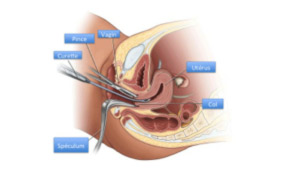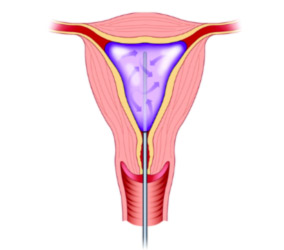Endometrial ablation (endometrectomy)
The endometrium is a mucous membrane lining the inside of the uterine cavity and it is sometimes necessary to remove it
Curettage (inside of the uterus)

Endometrial thermocoagulation

What is an endometrectomy?
It is the ablation or destruction of the endometrium, i.e. the inner lining of the uterus.
Why is this operation performed?
The main reason for the operation is heavy genital bleeding related to a hypertrophy of the endometrium, i.e. a thickening of the uterine lining confirmed by ultrasound.
What happens during the operation?
The surgery is performed on an outpatient basis under general or loco-regional anaesthesia (spinal anaesthesia).
The procedure can be performed in three ways, all by natural means:
1. The curettage
This involves scraping the inside of the uterus with a curette thereby “stripping” the mucosa. The fragments recovered are sent for analysis.
2. Hysteroscopic Resection
This is the reference technique. A camera with a small hook at its tip is inserted into the uterus. The endometrium is resected shaving by shaving, and is then sent to the laboratory for analysis.
3. Endometrial thermocoagulation
This is the most recent technique, and has a success rate comparable to resection. A small plastic bag (balloon) is introduced into the uterus and filled with water, which will be gradually brought to very high temperatures. The heat diffuses through the plastic film and destroys the endometrium. For an analysis of the endometrium, a sampling is performed at the very beginning of the surgery by performing a small curettage.








